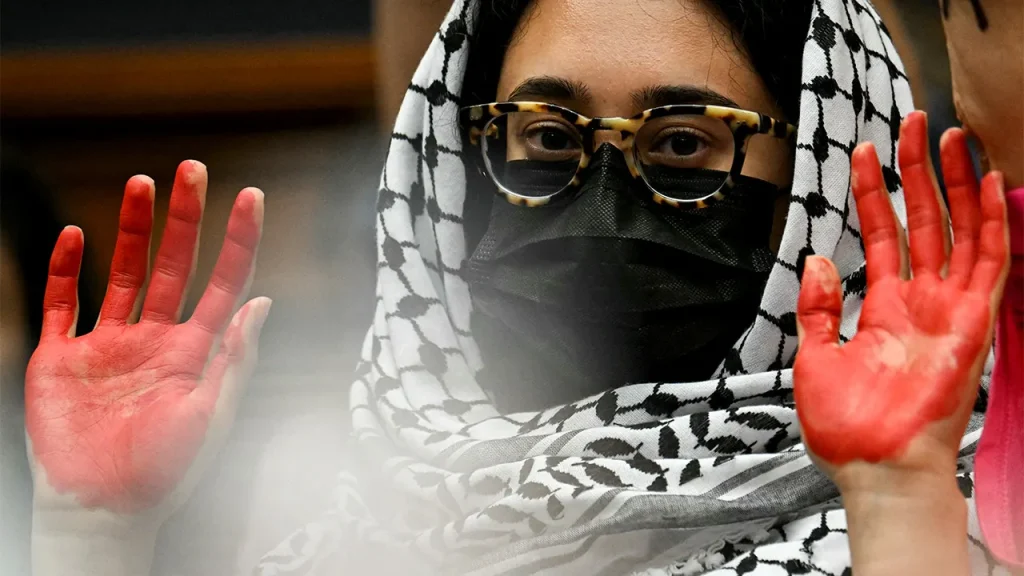Antisemitism on American Campuses: Two Years After October 7th
Two years after Hamas’ devastating attack on Israel, antisemitism hasn’t disappeared from American college campuses—it has simply changed form, according to Cornell Law School Clinical Professor William Jacobson. Though the visible protests and encampments that dominated headlines have largely subsided, Jacobson warns that a more insidious form of hatred has taken root beneath the surface. This “venomous” ideology has moved from public demonstrations to classrooms, faculty lounges, and student organizations, creating what he describes as a more pervasive and potentially dangerous environment for Jewish students. Universities appear to have learned how to manage the optics of the situation, cracking down on visible disruptions while allowing the underlying sentiment to flourish. “There has been a gross campaign at the international level to demonize Israel,” Jacobson told Fox News Digital. “False accusations of genocide. These are all percolating under the surface on the campuses. In some ways, the situation’s worse underneath.”
The professor argues that the same anti-Israel ideologies that fueled last year’s protests have now become embedded in campus culture in a more organized, coordinated manner. He traces the current climate back to the immediate aftermath of October 7th, when faculty members at prestigious institutions began framing Hamas’ actions through the lens of “decolonization.” “People were marching, calling for an Intifada. People were marching, celebrating October 7th,” he recalled. “Let’s not forget, in many ways, the most important day for campuses was not October 7th – it was October 8th.” That was when some academics started contextualizing the attacks as revolutionary acts rather than terrorism, with one professor even admitting to feeling “exhilarated” before later retracting the comment. This normalization of extreme positions, Jacobson believes, has only hardened over time despite appearing less visible to outside observers.
According to Jacobson, elite universities are playing a waiting game with federal authorities investigating campus antisemitism. He characterizes their approach as “rope-a-dope,” suggesting they’re stalling investigations while betting on outlasting the Trump administration. “I think the schools think they can outlast the Trump administration,” he said. “That they can rope-a-dope it for two to three more years. And then perhaps they’ll be rescued by a new administration.” This strategy reflects a confidence that public attention will eventually shift elsewhere, allowing institutions to return to business as usual. While donor backlash has affected some universities, Jacobson suggests the financial impact has been limited, with new donors—including foreign ones—potentially making up for lost contributions from alumni disturbed by campus antisemitism.
What truly concerns these institutions, Jacobson argues, is the threat to their federal funding, which dwarfs private donations in scale and importance. The Trump administration has been moving to limit eligibility for research grants and government contracts at universities found to have violated anti-discrimination laws. Harvard University, for instance, has recently faced renewed pressure regarding its access to certain federal funding sources. “If Trump ends up prevailing in a lot of these lawsuits, and I believe he will, that’s going to put certain schools in a very bad situation,” Jacobson predicted. He described universities as “people clinging to a lifeboat after their ship was just sunk,” desperately waiting for a change in political winds that might restore their sense of security and autonomy.
Addressing common defenses of campus activism, Jacobson rejected claims that Palestinian-supporting students are being punished merely for expressing political views. The issue, he maintains, is disruptive conduct rather than protected speech. “A lot of people say Palestinian students are being suspended for their speech. No, they’re not,” he explained. “They’re being suspended because they take over the library. They disrupt people. They intimidate people. It’s conduct that they’re engaged in.” The professor highlighted what he sees as a double standard in rule enforcement, describing a “Palestinian exception” that allowed activists to engage in behavior that would never be tolerated in other contexts. “You don’t get to set up checkpoints like they did at UCLA and weed out Zionist students. You don’t get to declare Zionist-free zones on a campus because you’re denying other students their right to education.”
Despite public statements and commitments to combat antisemitism, Jacobson remains skeptical that universities have genuinely confronted the problem. “I don’t believe the schools have changed their world outlook at all,” he concluded. “They’re just waiting it out. They’re playing hide-and-seek with the administration.” This assessment paints a concerning picture of higher education’s approach to antisemitism—one characterized by superficial responses aimed at managing public relations rather than addressing deep-seated issues. For Jewish students navigating these environments, the challenge isn’t just dealing with overt hostility but also confronting an institutional culture where antisemitic sentiments have been normalized and integrated into academic discourse. As Jacobson warns, “That nastiness that was there on October 7th and 8th is still there, but it’s in some ways even worse because there are organized attempts to spread that sort of venom throughout the campuses.” His message is clear: despite appearances of calm, the situation remains volatile, with antisemitism continuing to “brew” beneath a deceptively tranquil surface.


